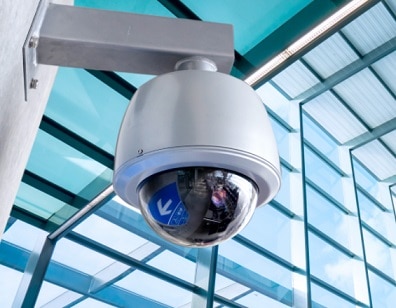Guest post by Jane Holmes
No matter what type or size of business you own, theft, vandalism and security breaches can happen to anyone.
As well as the cost of having property and items stolen or broken, the breaches also cause periods of downtime and loss of productivity.
All these can lead to large financial losses and make running your business even more difficult than it already is. In this article, we discuss the top 5 ways to improve your business’ security.
Although it may seem as though you have nothing to worry about, the prevention of these business-related crimes is certainly worth it. According to the FSB, traditional crime cost businesses over £14,000 over two years.
The more you invest in your security now, the more likely you are to avoid any costly surprises. So other than investing in a state-of-the-art security system, let’s take a look at what else you can do to improve your business’ security.
Building Checks
Probably your cheapest and most simple form of security is to carry out frequent and thorough building inspections on the inside and outside of your business. You can watch out for loitering or suspicious activity while also checking to see if doors, windows and entry points are safe and secure.
It sounds simple, but basic checks on premises could prevent so many security breaches. These frequent checks can also be a great way to keep on top of any necessary maintenance.
CCTV and Alarm Systems
CCTV and alarm systems are forms of security that have been around for a while but are simple to set up and relatively cheap compared to some forms of security. They are also a great way to deter criminals from entering your premises.
If you were wondering about the effectiveness of CCTV, a review carried out by the College of Policing found that “for every 100 crimes, an average of 16 crimes were prevented with CCTV”. If you add this to a functioning alarm system, the chances of criminals targeting your business are greatly reduced.
Regulate Access
Controlling who can enter and exit your business is a great way to prevent theft. There are many ways to do this, but the latest visitor management systems are one of the best ways to regulate and control who can access your business. Not only can this be used to control who can enter the premises, but you will also have records of people’s access.
Visitor management systems have a range of other benefits besides security. Since COVID-19, many businesses have become agile workplaces, with the workforce working from home or the office. Visitor management systems enable and assist an increase in flexibility.
Risk Assessment
Completing a risk assessment is a great way to narrow down the main threats to which your business may be susceptible. Once you find out the greatest threats to your business, you can implement security measures or specific ways to decrease vulnerability.
Eliminating the threat of theft and security breaches is impossible but reducing your vulnerability is a relatively simple process that can help make your workplace safer.
Training
Your employees are a risk to your business and the best way to limit this risk is by coming up with a thorough training programme on security and safety in the workplace. This is a great place to tie in the information learned from that risk assessment to reduce your company’s vulnerability.
These training programmes are the best way to teach your employees about things like how to enter and exit the premises, which documents can’t be taken off-site and what to do if they see suspicious behaviour from other individuals. Getting your employees on board with the latest security measures is one of the top ways to improve your overall security.
Sometimes overlooked by many smaller businesses, physical security should be a major focus for all companies. With a small investment in training and technology, vulnerability can be reduced and large amounts of money can be saved.
Jane Holmes is the Head of Marketing and Communications at Cloudbooking.com
SMES and cybersecurity – how to protect your business
Viruses and data theft the biggest risks


